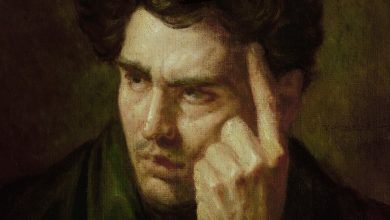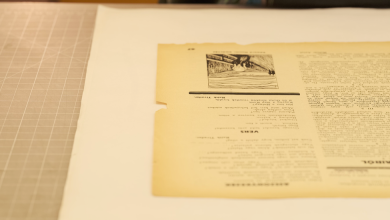Does Art Have to Be Relevant? One Prominent Critic Says No.

AUTHORITY AND FREEDOM
A Defense of the Arts
By Jed Perl
Something is troubling Jed Perl, but he won’t say exactly what. His new book, “Authority and Freedom,” begins and ends with a cri de coeur on behalf of the arts, the independence of which he believes is gravely endangered by the current imperative of social utility. His tone is urgent: “I want us to release art from the stranglehold of relevance — from the insistence that works of art, whether classic or contemporary, are validated … by the extent to which they line up with (or fail to line up with) our current social and political concerns.”
This is emphatic language, promising a passionate j’accuse of those who he believes are bent on repurposing art to serve those social and political goals, in other words, to change the world. One expects that he’ll name names and cite specific examples of what he perceives as a dangerous drift that threatens the autonomy and integrity of the artist. But … spoiler alert … he never does.
Perl’s thesis, most succinctly framed in his concluding chapter, is that the arts, rather than being obliged to convey utilitarian messaging, must instead remain “the products of a process that stands apart from so much of our social, economic and political life.” And because they stand apart from it, “they move us and excite us unlike anything else in our lives.” By making the mistake, no matter how well intentioned, of chaining works of art to politics or demanding that they address issues of social justice, we have “failed to account for their free-standing value.” As Flannery O’Connor said of a popular novel of her time, the premise of which offended her own sense of artistic freedom, the book “is just propaganda and its being propaganda for the side of the angels only makes it worse. The novel is an art form and when you use it for anything other than art, you pervert it.”
The Authority and Freedom of the book’s daunting title are the two poles of the artist’s way of being in the world. By embracing “authority” you absorb the lessons and models of the past, its knowledge of traditions and conventions. But by asserting “freedom” you engage in the act of breaking with those same traditions and conventions in order to “make it new.”
Perl’s use of the term “authority” owes much to Hannah Arendt, whose two essays “What Is Authority?” and “What Is Freedom?” very likely prompted him to apply her meditations on power and totalitarianism to the enigma of how the arts should function in a free society. “Authority” for Arendt is a positive value. She notes that the term derives from the Latin augere, “to augment.” By acknowledging authority we augment, literally “add to,” the foundations upon which we maintain our social order. It is, in Perl’s words, the “ancient tradition that the living embrace.” It follows that authority in the best sense of the word is conservative. It is rule-based, conventional (again, in the positive sense). For Perl it’s “a hierarchy of values about which a group of people agree.” It is the familiar, the canonical, the historical. It implies collectively acknowledged values by which we judge something, a kind of experiential grid through which we, either consciously or unconsciously, encounter and evaluate our impressions, whether they be familiar or strange, comforting or disturbing. Thus one speaks of the “authority” of the rectangle that frames a painting, the “authority” of the sonnet that organizes the poet’s utterance, the “authority” of the sonata form that gives structure and meaning to the melodic and harmonic events of the musical discourse.
In Perl’s lexicon “freedom” is both the opposite of authority as well as its complement: It is everything that is intuitive, inventive, rule-breaking, fanciful, risk-taking, genre-defying, revolutionary — in short, it comprises all those impulses that challenge convention and that, if rightly cultivated, keep the arts alive and in a state of constant evolution. The popular archetype of the creative artist, the radical, uncompromising, groundbreaking “genius,” represents the more glamorous “freedom” side of Perl’s equation. But whether it was Beethoven or van Gogh or Emily Dickinson or Jackson Pollock, each of them “uncompromising” and “radical” in the public’s imagination, all had a firm grounding in convention, and all had supreme command of the tools of their art. “Artistic freedom,” Perl writes, “always involves engaging with some idea of order, which becomes an authority that the artist understands and acknowledges but to which the artist doesn’t necessarily entirely submit.”
Despite the anxious concerns about enforced relevance that inspired the book, “Authority and Freedom” more often than not reads like a free-range cornucopia of revelatory encounters Perl has had with books, poetry, music, painting, sculpture, architecture, film and dance. He radiates sheer pleasure with his very personal responses to art of all kinds, writing with warmth and a sense of gratitude for the many peak experiences he’s had from a lifetime of engagement. Although he’s best known for his critical essays on painting and sculpture — Perl was for years art columnist for The New Republic — he is an omnivore of all media. At times his penchant for name-checking across centuries can become head-spinning: A single paragraph can bounce us from Homer to Michelangelo to Mallarmé, Duchamp, Gertrude Stein and John Cage. He’ll see affinities everywhere — between Picasso and Aretha Franklin, Mozart and Jane Austen, or among Balthus, Borges and Balanchine. But these points of reference are all at the service of his main leitmotif: that the art that endures, that transcends the time and place of its conception, is the product of an alchemical union of technical command, knowledge of precedent and a concomitant determination to break with that precedent.
“Only when artists have felt free enough to absorb the patterns and purposes of a particular art form can they begin to assert their own freedom,” he writes. It’s another way of reiterating the old saw, “You need to know the rules in order to break them.”
So it is baffling why, after Perl’s repeated alarms about the threat of “relevance,” he gives no examples of what exactly he sees that troubles him so. Who does he feel is exerting this pressure to be relevant? Is he addressing museums, dance and theater companies, symphony orchestras, all the cultural heavy hitters who, particularly in the wake of Black Lives Matter, are redirecting energy toward projects keyed to social justice? Is it the foundations, many of which are now targeting their funding to social causes? Would he approve or disapprove of a recent grant of $300,000 by the Hewlett Foundation to the California Shakespeare Theater, which “redefines classical theater through the lenses of equity, diversity and inclusion”? Is pressure coming from critics who choose which art to discuss? Or is it the consumers of art themselves, audiences, gallery-goers, readers and listeners? We are left to connect the dots. One wonders whether the real reason for his silence here is the by now familiar threat of being canceled. As a result, the book tends to remain on the “meta” plane much of the time — earnest and thoughtful, but absent the cranky brio, the piss and vinegar of his art columns, as when for example he once wrote about Sigmar Polke as “a cross between a slob-provocateur and a brutish aesthete” who mingles “gadabout hedonism and ostentatious disaffection.”
It’s unlikely that “Authority and Freedom” will change many artists’ minds about how they view their work. They will do what they want, and many, if not most, today are ablaze with an intensity not seen since the 1930s to make their art speak truth to power, to heal what they deem the rent in our social fabric. If you ask them, they will tell you that art that doesn’t address this sense of urgency is not just out of touch with the times, it is irrelevant.




